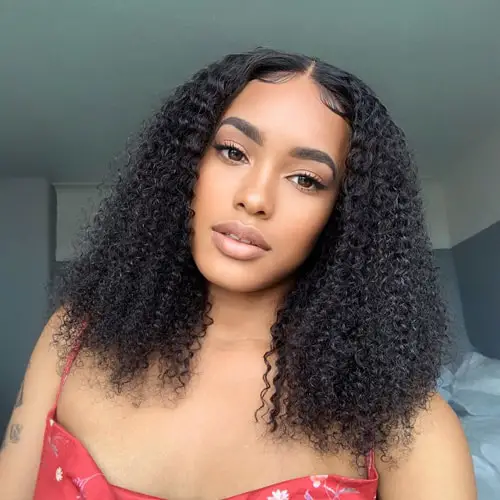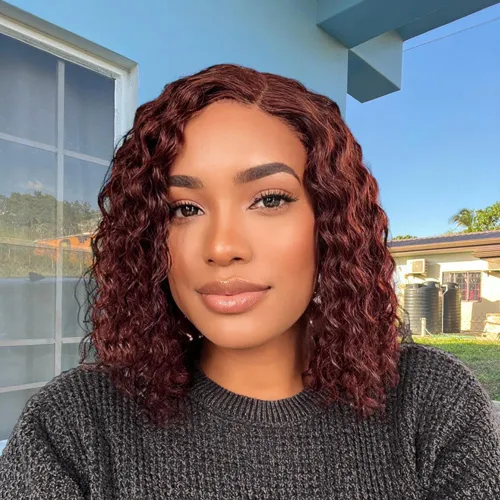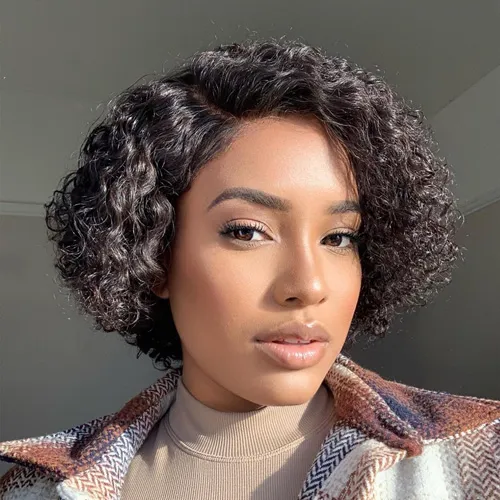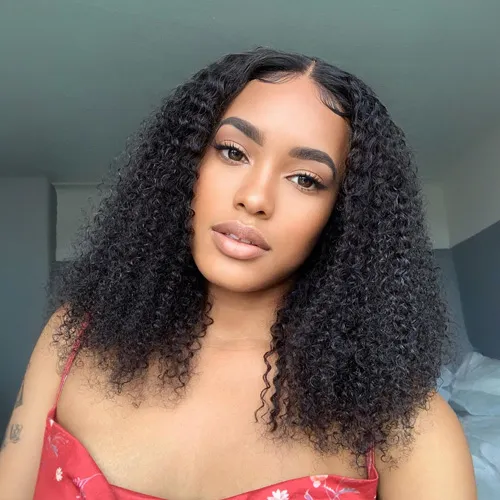What Is The Perfect Length For A Bob Wig?

The ideal length of a bob wig can be a pivotal decision, affecting everything from the overall look to the maintenance and versatility of the hairstyle. A bob wig, with its timeless and classic cut, can vary from jaw-length to shoulder-length.

Choosing the length of the bob wig according to your physical and facial characteristics.
Selecting the ideal length for a bob wig based on your physical and facial features involves understanding how different lengths can enhance your natural appearance and balance your facial proportions.
1. Analyze your face shape.
Different face shapes are flattered by various bob lengths. Here’s how you can choose based on common face shapes:
Oval face:
Being the most balanced face shape, almost any length of bob works well. A classic chin-length bob can really highlight the face’s natural symmetry.
Round face:
Longer bobs (lobs) that end just above or at the shoulders help elongate the face, making it appear more oval. Avoid chin-length bobs which can accentuate the roundness.
Square face:
Bobs that end slightly below the jawline help soften the angular jaw corners. A slightly tapered end can also provide a softening effect.
Heart-shaped face:
A chin-length bob helps balance the wider forehead with a narrower chin. Layers and added volume around the jawline can be particularly flattering.
Long face:
A shorter bob with volume on the sides can help add width to the face, making it appear more balanced. Avoid longer bobs that lengthen the face further.
2. Consider your neck length.
Long neck:
Shorter bobs work beautifully with long necks, as they showcase the slender neck and enhance elegance.
Short neck:
A medium-length bob that falls just above the shoulders can help elongate the appearance of the neck.
3. Factor in your height.
Taller individuals:
Longer bobs can be very flattering, helping to balance your overall proportions.
Shorter individuals:
Short to medium-length bobs can work better, as very long bobs might overwhelm your stature.
4. Account for your jawline and chin features.
Prominent jawline:
A bob that ends just at or below the jawline can help soften a strong jaw. Consider waves or curls to add texture and soften the overall look.
Softer jawline:
A crisp, angular bob cut can help define the jawline more distinctly.
5. Reflect on your lifestyle and maintenance willingness.
Active lifestyle:
A shorter bob is practical, easier to manage, and less likely to get in the way during physical activities.
Style flexibility:
If you enjoy changing up your hairstyle frequently, a longer bob provides more versatility for creating different looks such as curls, braids, or updos.
Maintenance preference:
Short bobs might require frequent trims to maintain the shape, while longer bobs might need more styling time.
6. Complementing body type.
Curvier bodies:
Longer bobs can balance fuller body types beautifully by elongating the neck and drawing the eyes downward.
Petite bodies:
Short to medium bobs can complement smaller frames without overpowering them.
7. Hair texture and volume consideration.
Thick hair:
A layered bob can remove bulk and control the shape, making maintenance easier.
Thin hair:
A blunt cut bob can give an illusion of more volume.

Popular bob wig lengths.
a. Short bob (Chin-length and shorter):
Style:
Offers a bold, chic look that can highlight facial features dramatically.
Maintenance:
Generally low maintenance; quick to style.
Best for:
Making a statement, easy daily wear, and those with less time for styling.
b. Medium bob (Chin to shoulder-length):
Style:
Strikes a balance between elegance and edginess; versatile for styling (straight, wavy, curled).
Maintenance:
Moderate; might require occasional trimming to keep the ends looking sharp.
Best for:
Those who enjoy changing their style frequently or want a bit more flexibility with looks.
c. Long bob (Shoulder-length and longer):
Style:
More romantic and can be styled in numerous ways, offering the most versatility.
Maintenance:
High; requires more effort in styling and keeping healthy ends.
Best for:
Those who like experimenting with different hairstyles and don’t mind spending more time on hair care.

How can you measure a bob wig hair correctly?
Measuring a bob wig correctly is essential to ensure that it fits well and achieves the look you desire. Unlike measuring natural hair, where the strands can fall differently based on the hairstyle, wigs require a more systematic approach to ensure accurate measurements.
a. Tools needed.
Soft measuring tape.
Wig stand or mannequin head.
Pins (to secure the wig if necessary)
b. Steps to measure a bob wig.
1. Prepare the wig:
Place the bob wig on a wig stand or a mannequin head. Ensure it is properly secured with pins if it tends to slip. The wig should be styled as you would wear it because the length can vary with styling – curls shorten the length, while straightening maximizes it.
2. Measure the front to back:
Start at the very front of the wig at the hairline.
Run the measuring tape over the top of the head to the back of the wig where it ends on the nape. This gives you the vertical length of the wig.
3. Measure the circumference:
Place one end of the tape at the center of the front hairline.
Wrap the tape around the head, going behind the ears, and returning to the starting point at the front of the hairline. This measures the circumference and is particularly useful for ensuring the wig cap is the right size for your head.
4. Measure ear to ear:
Start the measuring tape at one ear, bringing it across the top of the head to the other ear. This measurement helps in assessing how the wig will cover the side areas of the head.
5. Measure the width of hairline:
Measure from one side of the natural hairline to the other, across the forehead. This helps determine the width of the wig’s front and ensures it aligns well with your natural hairline.
6. Measure the length of the bob:
To measure the length of the bob itself, take the measuring tape to the back of the wig at the nape, and measure down to where the hair ends. It’s important to measure at the back because bobs often have different lengths from the back to the sides.
Repeat this step on the sides of the wig, typically starting around the temple area and going down to where the hair ends. This helps in determining if the cut is even and if it suits your desired style.
Tips for accurate measurements.
1. Ensure the wig is straight:
If the wig is curly or wavy, consider gently straightening it for a more accurate measurement of length. Re-curl or style afterward as needed.
2. Use a flat surface:
Make sure the wig is lying as flat and natural as possible, especially when placed on the wig stand.
3. Consistent measurement points:
Always measure from the same points for consistency, especially if you’re comparing different wigs or tracking changes in a single wig.
4. Check multiple points:
Since bob wigs can have varying lengths (especially if styled asymmetrically), checking multiple points ensures you understand the overall shape and style of the bob.
Find the perfect one for you.
The perfect length for a bob wig varies depending on individual factors such as face shape, personal style, and lifestyle. Whether it’s a chic, short bob or a versatile long bob, the key is to choose a length that not only flatters your face but also fits your daily routine and style preferences. As with any fashion choice, the best option is one that makes you feel confident and beautiful.
